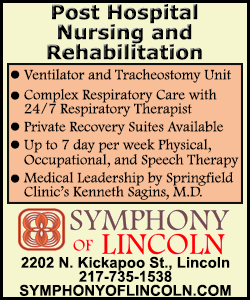|
 “We know that older people with back pain have poor physical
function, like lower strength and difficulty rising from a chair,”
said lead author Lynn Marshall, an associate professor at Oregon
Health and Science University in Portland. “We know that older people with back pain have poor physical
function, like lower strength and difficulty rising from a chair,”
said lead author Lynn Marshall, an associate professor at Oregon
Health and Science University in Portland.
“Pain is not thought of as a traditional fall risk factor, but our
study showed that back pain is a risk factor for falls among older
men,” Marshall told Reuters Health by email.
She and her colleagues analyzed data on nearly 6,000 men over age 65
living at home. Between 2000 and 2002, the participants filled out
baseline questionnaires about back pain - whether they had
experienced it in the previous 12 months, where the pain was, how
often it happened and how severe it was.
Over the following year, the men also reported every four months on
whether they had fallen and how many times.

The researchers also collected information on the men’s medication
use, dizziness, disabilities and other body areas experiencing pain
to account for the influence of these factors on the risk of a fall.
Just over two thirds of the men reported having had back pain in the
baseline questionnaire. Among these, 62 percent had pain only in the
low back, 9 percent reported the pain as severe, 20 percent were
bothered by their pain "all or most of the time" and 30 percent
limited their activities because of the pain.
During the next year 1,388 men – one quarter of the group – fell at
least once, and 632 men had multiple falls, according to the results
in Journals of Gerontology: Medical Sciences.
The men with back pain were 30 percent more likely than those
without it to fall multiple times, though the risk of falling just
once was the same between groups.
The risk of any fall was higher for people with pain in two
different parts of the back, however, and higher still for people
with three or more sites of pain, compared to those with no back
pain.
Men with more severe back pain or pain that occurred more often were
also at greater risk for falls.
“Falls and particularly injuries from falls are a common source of
disability and functional decline among older persons, but are
preventable through relatively inexpensive interventions,” said Dr.
Thomas Gill, a professor of geriatric medicine at Yale University in
New Haven, Connecticut.

[to top of second column] |

Gill noted that making safety adjustments in the house, such as
tacking down rugs and adding grab bars in bathrooms may be helpful
for people at risk of falling.
“Physical activity and exercise, particularly focusing on gait,
balance and muscle strength, are beneficial,” he said by email,
adding that proper footwear is important.
Minimizing the number of medications that may affect the brain or
blood pressure may also be helpful to prevent falls, Gill said.
Falls are the leading cause of death and injury in older Americans,
according to the U.S. Centers for Disease Control and Prevention.
The study doesn’t prove that back pain causes falls. But the results
are in line with similar findings of a heightened fall risk among
U.S. women with back pain, the authors note.
It’s possible that fear of falling, or cognitive problems associated
with the back pain could explain the link, the researchers write,
but more studies are needed to understand the connection.
“Falls result when we lose our balance and fail to recover it,”
Marshall noted. “To avoid falls, we need to be aware of both the
conditions that could cause us to lose balance and the conditions
that prevent regaining balance.”

Marshall recommends talking to one’s doctor about any concerns about
balance or falling and that people ask how best to adapt their homes
to avoid falls.
SOURCE: bit.ly/2hxUi9v Journals of Gerontology: Medical Sciences,
online November 16, 2016.
[© 2016 Thomson Reuters. All rights
reserved.] Copyright 2016 Reuters. All rights reserved. This material may not be published,
broadcast, rewritten or redistributed. |